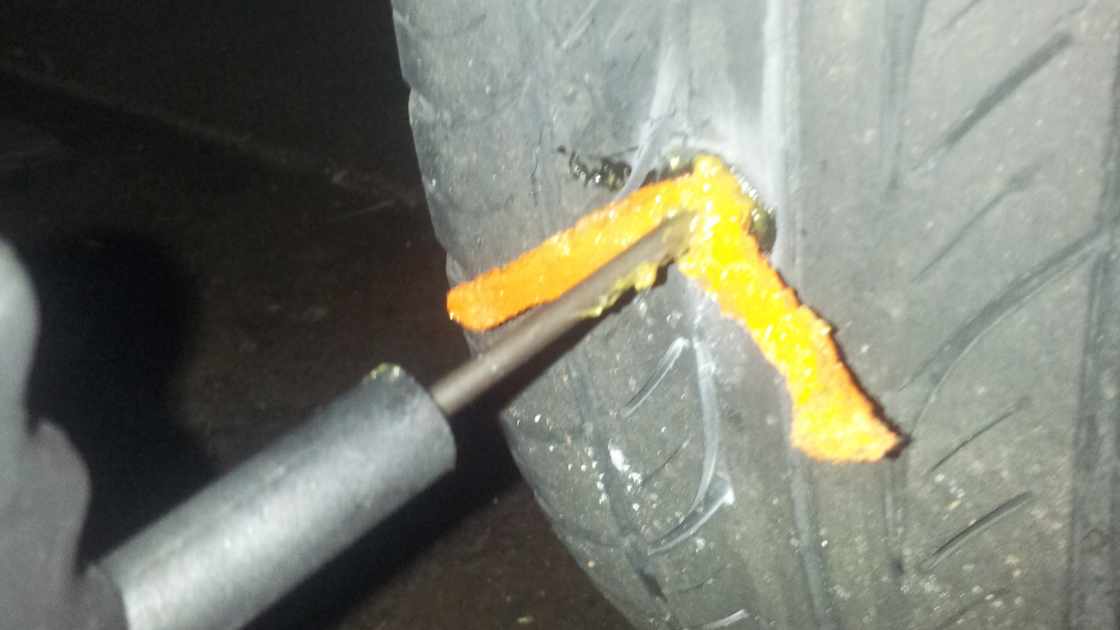Table of Contents
ToggleA Step-by-Step Guide on How to Plug a Tire
Materials Needed:
- Tire repair kit: This typically includes a T-handle insertion tool, rubber cement, and tire plugs.
- Pliers
- Tire pressure gauge
- Jack and lug wrench
- Penknife or razor blade
- Portable air compressor or tire inflator
- Spray bottle with soapy water
Step 1: Identify the Damage
Before attempting to plug a tire, it’s essential to locate the source of the leak. Remove the flat tire and inspect it for any visible punctures, nails, or objects embedded in the tread. If you can’t find the puncture, use a spray bottle with soapy water to identify the leak by spraying it on the tire. Look for bubbles forming where the air is escaping.
Step 2: Remove the Object
If there’s a visible object, such as a nail or screw, lodged in the tire, carefully remove it using pliers. Be cautious not to further damage the tire in the process.
Step 3: Prepare the Tire and Tools
Use the jack to lift the vehicle and remove the flat tire. Make sure the tire is fully deflated before proceeding. Gather the tire repair kit, including the T-handle insertion tool, rubber cement, and tire plugs.
Step 4: Ream the Puncture Hole
Take the T-handle insertion tool and use it to ream out the puncture hole. Twist the tool in and out a few times to create a clean and smooth channel for the tire plug.
Step 5: Insert the Tire Plug
Thread a tire plug through the eye of the insertion tool, ensuring it’s centered. Apply rubber cement to the plug, then insert the plug into the puncture hole with a firm, steady motion. Leave a small portion of the plug protruding from the tire.
Step 6: Trim Excess Plug
Using a penknife or razor blade, trim the excess portion of the tire plug flush with the tire tread.
Step 7: Inflate the Tire
Using a portable air compressor or tire inflator, inflate the tire to the recommended pressure. Check for any hissing sounds or bubbles using the soapy water spray to ensure the plug seals the puncture effectively.
FAQs
How do I identify a puncture in my tire?
To identify a puncture, visually inspect your tire for any visible objects like nails or screws. If nothing is apparent, use a spray bottle with soapy water and spray it onto the tire. Look for bubbles forming at the leak site, as the escaping air will cause the soapy water to bubble.
Can I plug any tire puncture, or are there limitations?
Tire plugs are suitable for repairing simple punctures caused by nails or screws in the tread area. However, they are not recommended for repairing punctures in the sidewall or near the tire shoulder. Additionally, punctures larger than 1/4 inch (6 mm) may require professional assessment and repair.
What should I do after plugging a tire?
After successfully plugging a tire, inflate it to the recommended pressure using a tire inflator. Monitor the tire for any signs of leakage by spraying a soapy water solution on the plugged area. Remember that a tire plug is a temporary solution, and it’s crucial to have the tire professionally inspected and repaired or replaced at the earliest convenience.
Final Thought
Knowing how to plug a tire is a valuable skill that can get you out of a tough situation. By following these steps and having the right tools on hand, you can confidently repair a punctured tire and continue your journey safely. Remember that tire plugs are a temporary solution, and it’s crucial to have the tire professionally inspected and repaired or replaced as soon as possible.

Jeff Gordon is an accomplished writer with expertise in the basics of car accessories. With a keen eye for detail, Jeff has established himself as an authority on the subject, with a passion for all things automotive. Based in Jasper, Jeff is dedicated to providing readers with the information they need to make informed decisions when it comes to their car accessories.





